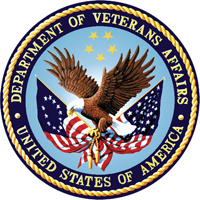After more than 65 years, Korean War Veterans who survived the Battle of Chosin Reservoir may still be suffering effects from exposure to extreme cold temperatures during that campaign.
 According to the VA Claims Adjudication Manual (M21-1) survivors of the Battle of Chosin Reservoir may have suffered acute or chronic effects of exposure to temperatures of -20F degrees and below. VA disability compensation is available for eligible veterans with service-connected injuries, illness or diseases from exposure to extreme cold during the battle.
According to the VA Claims Adjudication Manual (M21-1) survivors of the Battle of Chosin Reservoir may have suffered acute or chronic effects of exposure to temperatures of -20F degrees and below. VA disability compensation is available for eligible veterans with service-connected injuries, illness or diseases from exposure to extreme cold during the battle.
Sandwiched between World War II and the Vietnam War, the Korean War is often referred to as The Forgotten War. The dates of actual hostilities were from June 1950 to July 1953, during which 1.8 million veterans served. The Battle of Chosin Reservoir, also known as the Chosin Reservoir Campaign, was a decisive confrontation that took place from November 26 to December 11, 1950. During the brutal 17-day battle 30,000 United Nations troops had to fight in sub-zero temperatures, the coldest winter North Korea had experienced in 100 years. Personal accounts from soldiers on the battlefield reported temperatures dropping below -35F degrees. In a statement at a memorial dedication in 2011, Denny Weisgerber, retired staff sergeant and vice president of the 1st Marine Division Association said, “The battle of the Chosin Reservoir was the Iwo Jima of the Korean War.” The number of casualties and losses are disputed, but an estimated 18,000 UN forces were reported killed, missing or wounded.
The VA acknowledges that many service members did not receive treatment for frostbite or other signs and symptoms of cold related injuries, and that service treatment records (military medical records) may not contain evidence of any injuries. The VA Claims Adjudication Manual states, “If the veteran’s participation in the Chosin Reservoir Campaign is confirmed, the VA will concede exposure to extreme cold under the provisions of 38USC1154 (a).”
The fundamental requirements of a disability compensation claim for a veteran who fought during the Battle of Chosin Reservoir are: the veteran must be suffering from an injury, illness or disease as a result of the exposure to the extreme cold (evidence of a current disability); evidence of in-service occurrence (participation in the Chosin Reservoir Campaign), and a link or nexus between them (no other circumstances to which the current disability can be attributed).
Effects of Injury
Exposure to extremely cold temperatures can cause structural and functional disturbances of:
- small blood vessels
- cells
- nerves
- skin
- bone
The veteran may have suffered acute effects of exposure with immediate manifestation, or chronic effects with manifestation long after exposure to the extreme cold. Signs and symptoms at the original injury site may include:
- chronic fungal infection of the feet
- disturbances of nail growth
- hyperhidrosis
- chronic pain of the causalgia type
- abnormal skin color or thickness
- cold sensitization
- joint pain or stiffness
- Raynaud’s phenomenon
- weakness of hands or feet
- night pain
- weak or fallen arches
- edema
- numbness
- paresthesias
- breakdown or ulceration of cold injury scars
- vascular insufficiency, indicated by edema, shiny, atrophic skin, or hair loss, and
- increased risk of developing conditions, such as
- peripheral neuropathy
- squamous cell carcinoma of the skin, at the site of the scar from a cold injury, or
- arthritis or other bone abnormalities, such as osteoporosis, or subarticular punched-out lesions.
Disability compensation claim and personal statement
Along with the required disability compensation claim forms VetsHQ recommends the veteran submit a personal statement about their participation in the Campaign including service dates, branch of service and unit of assignment. In many cases, an official unit history can corroborate the necessary dates, places, types and circumstances of duty. If available, a copy of the unit history can be attached to the personal statement.
The required elements of a service-connected disability claim can be found on the VetsHQ website.
References:
- “Chosin Few” Honored During 1st Marine Division 70th Anniversary – https://www.mca-marines.org/leatherneck/gallery/chosin-few-honored-during-1st-marine-division-70th-anniversary
- VA Claims Adjudication Manual M21-1, Part III, Subpart iv, Chapter 4, Section E, Topic 2 updated May 8, 2015
- http://koreanwar-educator.org/topics/brief/p_veteran_facts.htm
